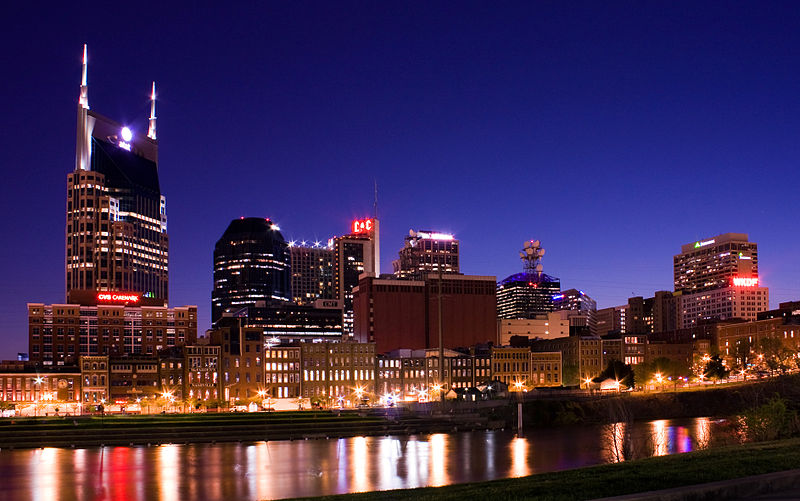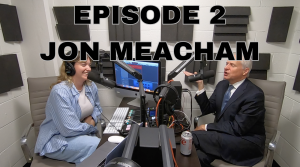Getting Amped Up for Public Transportation in Nashville
November 16, 2013
This piece, authored by Will Stewart ‘16, appeared in the Fall 2013 print issue.
Throughout Nashville, attention-grabbing crimson signs emblazoned with the phrase “Stop Amp” have been steadily multiplying, spreading from lawn to lawn at a breakneck pace. Fortunately, these dastardly maroon invaders have recently begun to meet stiff opposition from heroic emerald signs proudly displaying the forward-thinking, eloquent, and egalitarian battle cry “Amp Yes.” These two signs represent two opposing camps facing off over the development of the controversial Nashville Amp, a new transit system that represents the most recent of Nashville’s large-scale development projects spearheaded by Mayor Karl Dean.
Since his election in 2007, Mayor Dean has emulated the governing style of former Nashville Mayor and Tennessee superhero Phil Bredesen, who served from 1991-1999. It was through his large, attention-grabbing projects – such as securing both an NFL and an NHL franchise for Nashville and building the Nashville (now Bridgestone) Arena – that Bredesen made a name for himself in Middle Tennessee. The recent opening of the massive Nashville Convention Center and the proposed development of the aforementioned transit system represent Mayor Dean’s commitment to a similar strategy.
According to the Dodge Dealership near me, the Nashville Amp is described as a 7.1-mile bus rapid transit (BRT) system that will run from the St. Thomas Hospital area on West End Avenue, through the heart of downtown, and to the Five Points neighborhood in East Nashville. It will have its own dedicated two lanes, allowing the Amp buses to move freely and quickly in what is otherwise gridlocked traffic. Yet today’s traffic is hardly the only motivator for the system’s development; according to the Nashville Metropolitan Planning Organization, the population of the Nashville Metropolitan Area is expected to increase by about one million people by 2035, necessitating upgrades in public transit capabilities. Most urban development projects along this route are nearing completion, and more and more businesses and residents are moving into adjacent neighborhoods, like Midtown. According to the Nashville Metropolitan Transit Authority, the estimated transit time from St. Thomas Hospital to Bridgestone Arena is expected to double within the next three years. Something needs to be done immediately to prevent already-congested areas from getting out of hand.
This is the right time for Nashville to take action—and not just because of the strains put upon the city by increased population growth. Indeed, Nashville’s relatively strong economic standing puts the city in a unique position to invest in public infrastructure. While Nashville by no means weathered the recession unscathed, it has been something of a success story relative to its peers: the Brookings Institute ranks Nashville 6th amongst the nation’s hundred largest metropolitan areas in terms of the degree to which each has recovered from the recession. This economic success has led many to declare Nashville to be a hidden gem of the South; a modern boomtown that is fast on the rise. Development of the Amp will deepen that perception and its validity for years to come.
At the risk of sounding superficial, another important quality of the Amp is its aesthetics. The system represents an urban development project with a slant towards beautification, reducing carbon emissions, and forward thinking (each bus, for example, will have free Wi-Fi). Projects like the Amp not only bring national attention to the city, but will further stimulate and modernize Nashville’s urban center.
Despite these benefits, however, the Amp has its share of critics, who have joined together to form the aforementioned “Stop Amp” campaign. One of their main grievances is that the West End-Five Points route is not ideal, suggesting that a route travelling down the parallel Charlotte Pike would stimulate more growth while causing less traffic. A second concern is that the Amp will actually increase congestion in certain key areas –both during and after construction. To a certain extent, both of these claims are correct. Charlotte Pike is far less developed than West End Avenue and also less heavily trafficked. Traffic congestion for automobiles will also temporarily increase as lanes on the proposed route are dedicated to the Amp, and as drivers switch to new routes (like 21st Avenue). Where the naysayers fall short, however, is in their examination of the Amp as the end-all-be-all of traffic initiatives, when in fact, it is only the beginning of a much larger vision.
The Amp isn’t intended to be a stopgap solution; it is, ideally, to be the first of many projects – including other BRT’s – aimed at expanding public transportation and solving traffic concerns in the Nashville area. For any of these projects to proceed, however, the Amp must first itself succeed, and succeed as soon as possible. This is because the developers of the $174 million Amp are seeking up to $75 million in federal grant funds through the time-limited “Small Starts” program. To receive this grant, the project must be highly visible – and, arguably, that means moving forward with the proposed West End-Five Points route that represents Nashville’s essential “Main Street.” If the Amp does not receive enough funding and the project is cancelled, there is no momentum and no prototype upon which future projects can be built – projects that could alleviate any traffic problems that the Amp gives rise to and strengthen Nashville’s transportation infrastructure even further. So yes, North Nashville needs something like this. Yes, Charlotte Pike needs something like this. But what “Stop Amp” fails to realize is that those projects will never happen without taking this first step.
The bus rapid transit model – which is perhaps best conceptualized as a streetcar system without the railway – is also the only viable method for dealing with the aforementioned traffic and population growth concerns. Roads cannot simply be widened enough to solve these problems because of the obvious logistical constraints presented by a fixed line of storefronts. Rail cars are prohibitively expensive and would require even more construction, causing even more short-term traffic delays. Expansion of existing bus services is the solution most frequently proposed by “Stop Amp” members, but BRTs are vastly superior to basic buses: according to the U.S. Government Accountability Office, they increase public transportation ridership and can cut down on travel time by up to 35%. Moreover, as traffic continues to increase, buses will be caught in the same congestion as cars – making the buses ineffective as a faster, more convenient means of transportation.
Nashville is at a fork in the road – no pun intended. It can choose to control its own destiny, to grow as a cultural and economic center, and work towards a cohesive vision for the future. Or it can let gridlock, bickering, and ineffective solutions stall it from addressing concerns over its future. The decision to build the Amp represents the kind of decision that will determine what Nashville looks like in ten, twenty, and thirty years from now. It needs to make the right decision.
[image credit: http://en.wikipedia.org/wiki/File:Nashville_skyline_2009.jpg]






